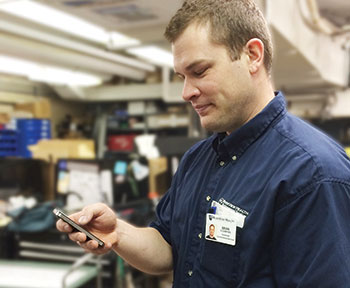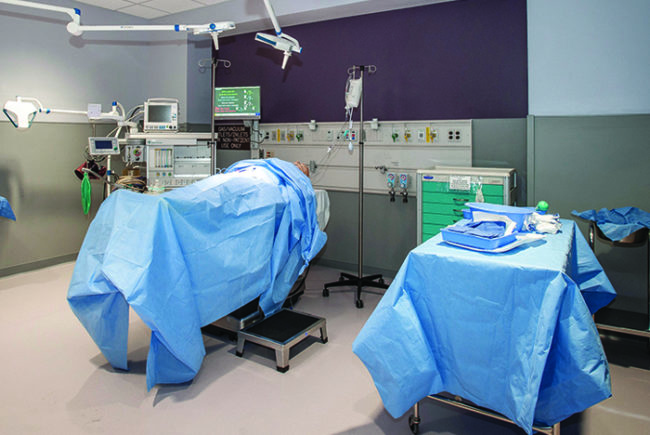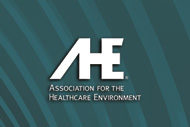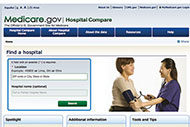 |
|
PHOTO COURTESY OF RIVERVIEW HEALTH A RiverView Health employee responds to an electronic work request using a smartphone. |
After eliminating its paper-based, work request process and moving to a computerized maintenance management system (CMMS), the environmental services (ES) department at RiverView Health in Crookston, Minn., became much more responsive to patient and staff requests, ultimately helping its organization raise its HCAHPS score from the 41st percentile to the 84th in less than six months.
Prior to implementing the MaintenanceEdge tool with work order and planned maintenance modules from FacilityDude, Cary, N.C., Jennifer Tate, ES manager, says the department’s system was far from efficient.
“When we were using paper tickets, they could sit there for a while, and people in other departments either didn’t know if we had responded or didn’t think we responded,” Tate says. The CMMS eliminated the need for paper tickets, calls and pages by pushing an electronic work-request model.
RiverView Health employees can input work order requests directly into the system by logging on from any computer, tablet or smartphone, and the requests immediately are sent to the ES department. The ES department can quickly respond, letting the requester know when the work order will be handled and if any special tasks are required. The system automatically sends a follow-up notification when the work order is completed.
“We get requests ranging anywhere from waxing a floor or urine cleanups, to moving offices or room setup,” Tate says. “For our outpatient surgery units, we have units that deal with methicillin-resistant Staphylococcus aureus or Clostridium difficile, and we get requests to handle those rooms through [the CMMS].”
RiverView Health has been using the CMMS since September 2012, when its plant services department adopted it. The ES department began using it in mid-2013 and, between the two departments, RiverView Health has processed 10,400 requests through the system.
In addition to improving its communication and response time when working with other departments, the software’s planned maintenance module has helped the ES department to manage labor hours better.
The 21-person staff manage 260,000 sq. ft. on the main hospital campus plus three off-campus clinics, two recovery centers and a home care office. Because all work requests filter to a central feed, the department no longer has to post reminders to employees across locations or as shifts rotate. It also receives day-of reminders for regularly planned tasks.
“Prior [to the CMMS], we weren’t calculating the time from when we got a work request to when we finished, so this now gives us an idea of how quickly we are finishing work requests,” Tate says. “But the biggest thing for us has been watching those HCAHPS scores go up, which I believe is a reflection of [the CMMS] and how it’s being used to get those work requests through quickly to make sure we have a safe and clean environment for patients.”





